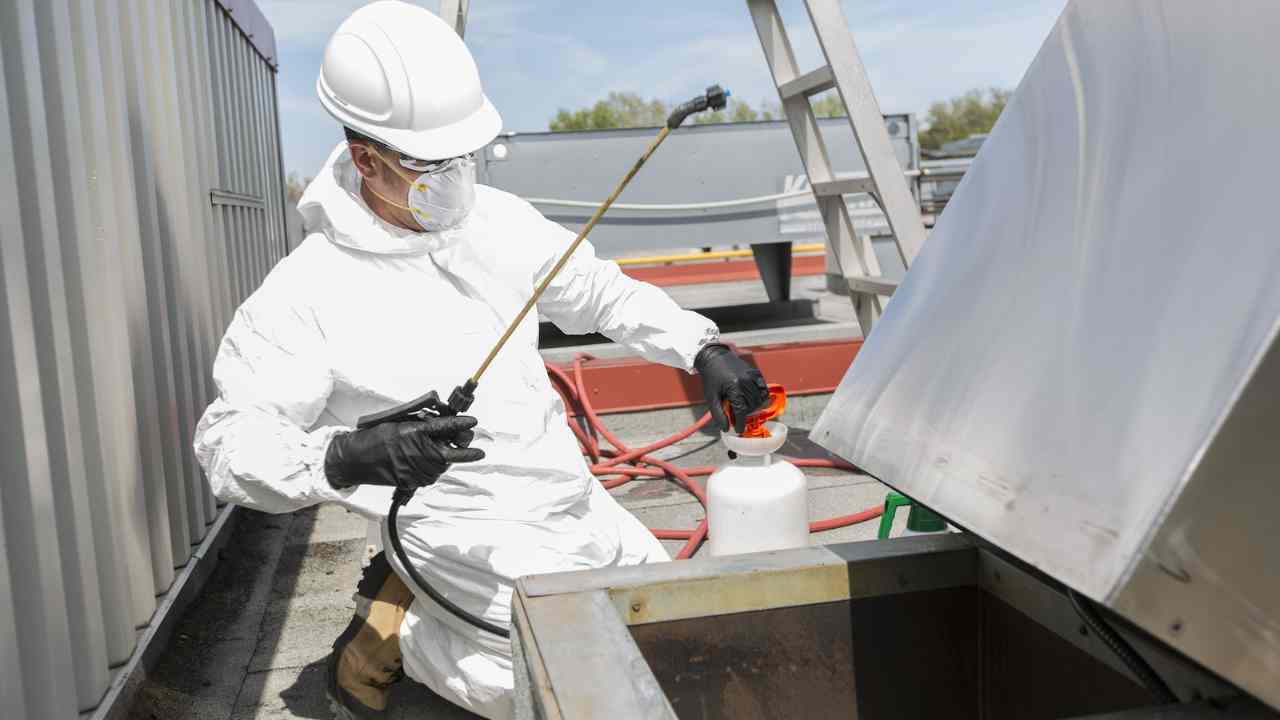How to Make Kitchen Exhaust Cleaning Easier

Ontario-wide Kitchen Exhaust and Hood Cleaning – Best prices and service guaranteed.
Keeping your kitchen exhaust clean is essential for maintaining a healthy and safe environment in your home or restaurant. A clean kitchen exhaust system not only improves air quality but also reduces the risk of fire hazards. However, cleaning the kitchen exhaust can be a daunting task if you don’t have the right knowledge and tools. In this article, we will explore various tips and techniques to make kitchen exhaust cleaning easier and more efficient.
The Importance of Kitchen Exhaust Cleaning
Before diving into the tips, let’s understand why kitchen exhaust cleaning is crucial. The kitchen exhaust system, including the hood, filters, and ductwork, plays a vital role in removing smoke, grease, and odors from the cooking area. Over time, these substances accumulate and form a greasy residue, which can lead to several problems:
- Fire Hazards: Grease buildup in the exhaust system is highly flammable and can ignite easily, causing a dangerous fire.
- Poor Air Quality: A dirty kitchen exhaust system can release harmful pollutants and odors into the air, leading to respiratory issues and unpleasant smells.
- Inefficiency: When the exhaust system is clogged with grease, it hampers the airflow, reducing the efficiency of the ventilation system and increasing energy consumption.
- Health Code Violations: Neglecting kitchen exhaust cleaning can result in violations of health and safety regulations, leading to penalties and potential closure of the establishment.
Now that we understand the importance of kitchen exhaust cleaning, let’s explore some effective ways to make this task easier:
Ontario-wide Kitchen Exhaust and Hood Cleaning – Best prices and service guaranteed.
1. Regular Maintenance and Inspection
Regular maintenance and inspection are key to preventing excessive grease buildup in the kitchen exhaust system. Here are some steps you can take:
- Establish a Cleaning Schedule: Create a cleaning schedule based on the frequency of cooking and the type of food being prepared. High-volume kitchens may require more frequent cleaning.
- Inspect the Exhaust System: Regularly inspect the hood, filters, and ductwork for any signs of grease buildup or damage. Look for loose or missing parts that may affect the system’s performance.
- Keep Records: Maintain a logbook to record cleaning dates, inspections, and any maintenance or repairs performed. This helps in tracking the system’s condition and ensures compliance with regulations.
2. Use Proper Cleaning Techniques
Knowing the right cleaning techniques can make a significant difference in the effectiveness and ease of kitchen exhaust cleaning. Here are some tips:
- Start with the Hood: Begin by cleaning the hood, as it accumulates the most grease. Use a degreaser or a mixture of warm water and dish soap to remove the grease. Scrub the surface thoroughly and rinse with clean water.
- Clean the Filters: Remove the filters and soak them in a degreasing solution. Scrub them gently to remove the grease buildup. Rinse the filters thoroughly and let them dry before reinstalling.
- Clear the Ductwork: Cleaning the ductwork requires professional expertise and specialized tools. Consider hiring a professional kitchen exhaust cleaning service to ensure thorough cleaning of the ducts.
- Use Protective Gear: When cleaning the kitchen exhaust, wear protective gear such as gloves, goggles, and a mask to protect yourself from grease and chemical cleaners.
-
Ontario-wide Kitchen Exhaust and Hood Cleaning – Best prices and service guaranteed.
3. Invest in Quality Cleaning Tools
The right cleaning tools can make the task of kitchen exhaust cleaning much easier and more efficient. Here are some essential tools to consider:
- Scrapers and Brushes: Invest in high-quality scrapers and brushes specifically designed for removing grease from the hood and filters. These tools make the cleaning process more effective.
- Pressure Washer: A pressure washer can be a valuable tool for cleaning the exterior of the hood and removing stubborn grease. However, use it with caution to avoid damaging the equipment.
- Chemical Degreasers: Choose commercial-grade degreasers that are effective in breaking down grease. Read the instructions carefully and follow the recommended dilution ratios for optimal results.
4. Consider Professional Cleaning Services
While regular maintenance and cleaning are essential, it is also beneficial to hire professional kitchen exhaust cleaning services periodically. Professional cleaners have the expertise, experience, and specialized equipment to ensure a thorough cleaning of the entire exhaust system, including the ductwork. They can also identify any potential issues and provide recommendations for maintenance or repairs.
Ontario-wide Kitchen Exhaust and Hood Cleaning – Best prices and service guaranteed.
5. Stay Updated with Regulations
It is crucial to stay updated with local health and safety regulations regarding kitchen exhaust cleaning. Different jurisdictions may have specific requirements for cleaning frequency, documentation, and certification. By staying compliant with these regulations, you not only ensure a safe environment but also avoid penalties and legal issues.
Regular maintenance, proper cleaning techniques, quality tools, professional services, and compliance with regulations are key factors in making kitchen exhaust cleaning easier and more efficient. By following these tips, you can maintain a clean and safe kitchen environment, reduce fire hazards, improve air quality, and ensure compliance with health and safety regulations. Remember, a clean kitchen exhaust system is not only essential for your well-being but also for the longevity and efficiency of your kitchen equipment.
Read more about “Best Practices for Cleaning Kitchen Exhaust” right here
Frequently asked questions about How to Make Kitchen Exhaust Cleaning Easier.

Cleaning my kitchen exhaust system can be a daunting task. Are there any preventive measures I can take to make the cleaning process easier and more manageable?
Absolutely! Taking preventive measures can significantly ease the kitchen exhaust cleaning process and ensure that the system remains cleaner for longer periods. One of the most effective preventive measures is regular maintenance of the grease filters. Grease filters are the first line of defense against airborne grease particles, and by keeping them clean, you reduce the amount of grease that reaches the interior surfaces of the exhaust system. Clean grease filters regularly by either hand-washing them or using a dishwasher, depending on the manufacturer’s instructions.
Another preventive measure is implementing a kitchen staff training program focused on grease management. Train your staff to practice proper cooking techniques and minimize the generation of airborne grease. Simple practices like covering pots and pans while cooking and using splatter screens can help prevent grease from escaping into the air. Additionally, instruct your staff on the importance of regularly emptying and cleaning grease traps and drip trays to prevent excess grease from entering the exhaust system.
Lastly, consider installing baffle grease filters, which are more effective at capturing grease compared to mesh filters. Baffle filters use a series of metal blades to separate grease particles from the airflow, reducing grease accumulation in the exhaust system. Upgrading to baffle filters can make a significant difference in keeping your kitchen exhaust cleaner and easier to maintain.
I’ve heard about self-cleaning kitchen exhaust systems. Can investing in such a system make the cleaning process easier and more efficient?
Self-cleaning kitchen exhaust systems, also known as automatic cleaning systems, can indeed make the cleaning process easier and more efficient. These systems are designed to reduce the frequency of manual cleaning by automatically removing grease buildup from the interior surfaces of the exhaust hoods and ductwork.
Self-cleaning systems typically operate through a combination of heat, water, and specialized cleaning agents. At predetermined intervals, the system activates a cleaning cycle, during which it sprays water and cleaning solution onto the surfaces, effectively breaking down and removing grease deposits. The collected debris and cleaning solution are then flushed out of the system, leaving the interior surfaces cleaner and reducing the need for manual cleaning.
While self-cleaning systems offer significant benefits, they do not eliminate the need for periodic manual cleaning entirely. Over time, some grease deposits may still accumulate in hard-to-reach areas that the automatic system cannot access. Therefore, it’s essential to complement self-cleaning with regular manual inspections and cleanings to ensure a thoroughly clean and efficient kitchen exhaust system.
Are there any cleaning tools or equipment that can streamline the kitchen exhaust cleaning process?
Yes, using the right cleaning tools and equipment can streamline the kitchen exhaust cleaning process and make it more effective. Here are some essential tools that can be beneficial:
Pressure Washers: High-pressure washers can be highly effective in removing stubborn grease and debris from exhaust hoods, ducts, and fans. They allow for deep cleaning of hard-to-reach areas, significantly reducing the time and effort required for manual scrubbing.
Scrapers and Brushes: Sturdy scrapers and brushes are valuable for dislodging and removing accumulated grease from metal surfaces. Choose appropriate brush types based on the material of the exhaust system to avoid causing damage.
Degreasers and Cleaning Agents: Invest in quality, biodegradable degreasers and cleaning agents that effectively break down grease without posing harm to the environment or your staff.
Flexible Shaft Systems: These systems consist of flexible shafts with rotating brushes, allowing technicians to access and clean hard-to-reach areas within the exhaust system. They can enhance the thoroughness of the cleaning process.
Inspection Cameras: Inspection cameras with long, flexible probes enable technicians to inspect the interior of the exhaust system visually. These cameras can identify areas that require additional attention and ensure that no section is overlooked during cleaning.
By equipping your cleaning team with these tools and equipment, you can improve the efficiency and thoroughness of the cleaning process, making it easier to maintain a clean and safe kitchen exhaust system.
How can I establish a consistent cleaning schedule to make kitchen exhaust cleaning more manageable?
Creating a consistent cleaning schedule is vital for managing kitchen exhaust cleaning effectively. The first step is to determine the ideal cleaning frequency based on factors such as the type of cooking, cooking volume, and the menu served. Consult with a professional kitchen exhaust cleaning service to assess your specific kitchen’s needs and recommend a suitable cleaning interval.
Once you have established the cleaning frequency, develop a cleaning calendar or log that includes the dates of past cleanings and upcoming scheduled cleanings. This calendar will serve as a visual reminder and help you plan ahead, ensuring that the cleaning process is never overlooked or delayed.
Additionally, consider partnering with a professional kitchen exhaust cleaning service that offers regular maintenance packages. Many cleaning companies provide maintenance contracts that outline a set schedule for cleaning and inspections.
These packages can help ensure that your kitchen exhaust system receives consistent attention and cleaning at the appropriate intervals, reducing the burden of scheduling and managing the cleaning process internally.
Can training my kitchen staff on proper cleaning procedures help simplify kitchen exhaust cleaning?
Absolutely! Training your kitchen staff on proper cleaning procedures can significantly simplify kitchen exhaust cleaning and foster a culture of cleanliness and responsibility. Begin by conducting a comprehensive training session that covers the importance of kitchen exhaust cleaning, the potential hazards of grease buildup, and the impact of a clean exhaust system on fire safety and overall kitchen hygiene.
Provide your staff with clear instructions on how to clean grease filters, including proper techniques for hand-washing or using a dishwasher. Emphasize the importance of regular filter cleaning and establish a schedule for filter maintenance.
Additionally, educate your staff on the correct procedures for disposing of grease and waste generated during the cleaning process. Improperly disposing of grease and waste can lead to clogs in the plumbing system and contribute to environmental pollution.
Encourage your staff to report any signs of excessive grease accumulation or performance issues with the exhaust system promptly. Early detection of problems can prevent them from escalating into more significant issues that require extensive cleaning or repairs.
- hood cleaning
- How to Make Kitchen Exhaust Cleaning Easier
- kitchen exhaust cleaning
- restaurant hood cleaning







